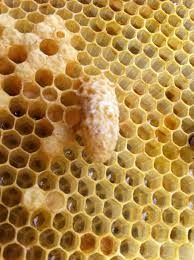This morning, I was delighted to spend time with Primary 6/7 teaching them about the life cycle of bees and all the different jobs that they perform in their life.
Primary 6/7 have been writing reports so they were taking notes as I was teaching them which they will be turning into a detailed report on bees tomorrow.
The notes had to be short, succinct and efficient so that they could record as much information as possible in a short period of time.
After school we checked the hives and removed all but one of the queen cells. We now know which one will be our new queen and she will be born on Saturday or Sunday! Start thinking of names!
The new hive is doing really well, the Queen is laying eggs and is really happy.
Also look out for the bit where Mr Green gets stung!













